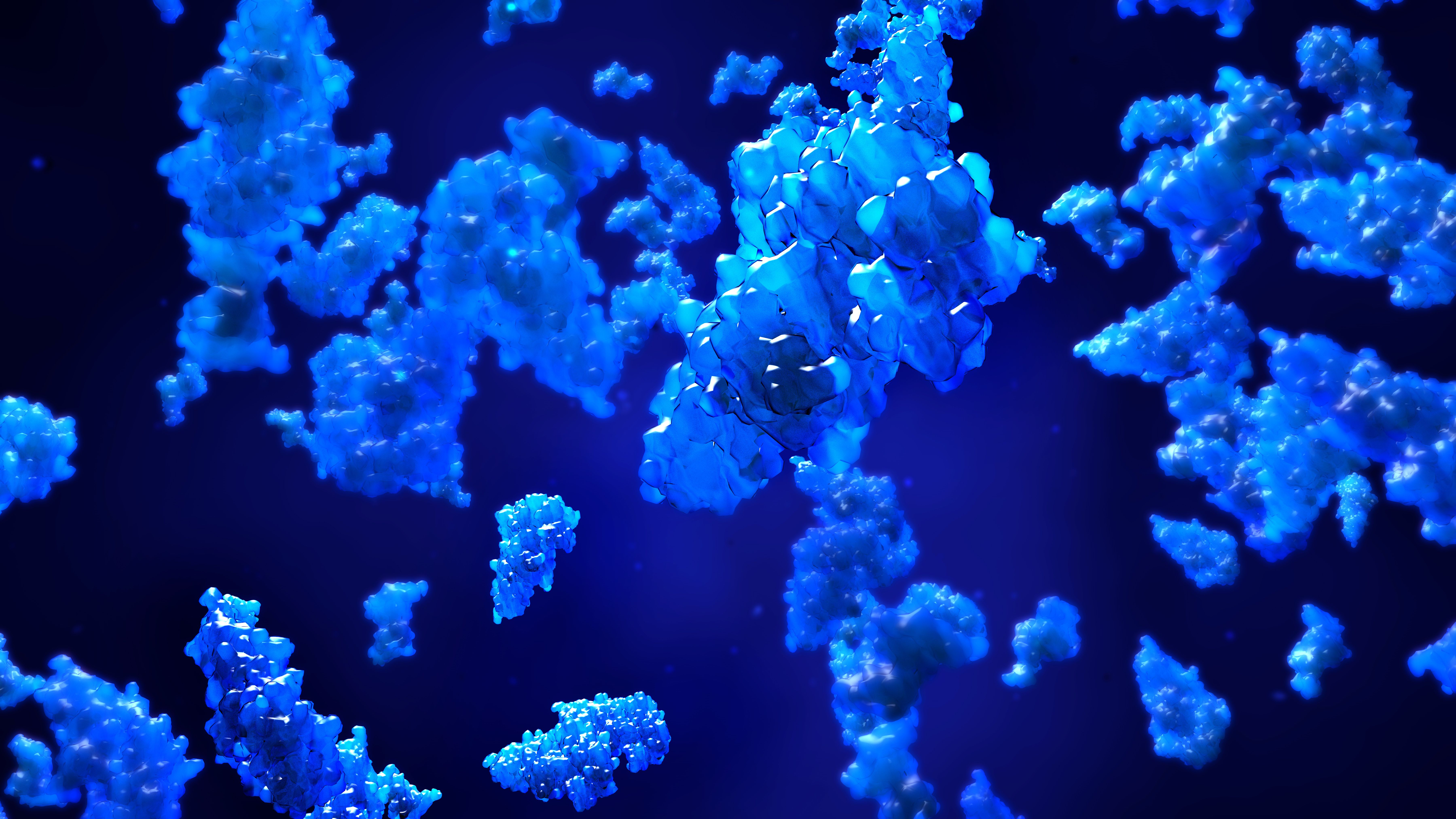Advancements in Multidimensional Liquid Chromatography–Mass Spectrometry (MDLC–MS) Enhance Proteomics Studies
High-throughput proteomic research has been hampered by the limited peak capacity of one-dimensional liquid chromatography (1D-LC) separation performance.
New research from Fudan University in China explores the studying of the proteome, which encompasses all proteins inside a genome, as it relates to the development of novel methods based on multidimensional liquid chromatography (MDLC), especially when coupled to mass spectrometry (MS) (1). This study, published in the Journal of Chromatography A, details both efficient online and user-friendly offline MDLC–MS methods for gathering proteomic data.
3d illustration proteins or enzymes | Image Credit: © Design Cells - stock.adobe.com

The use of liquid chromatography and mass spectrometry in conjunction (LC–MS) has been the analysis method of choice for high throughput proteomics studies, the researchers said, for the compatibility of the two components as well as the dependable automation, stability, and separation capacity of LC and the efficiency and sensitivity provided by MS when combined with another platform (1). But proteomics—which includes protein-expression profiling, protein function analysis, protein-protein interactions, protein structure determination, and post-translational modifications, as listed in the study—assumes expression levels of certain proteins up to 12 orders of magnitude, and so far contains only approximately 20,000 protein-coding genes reported in the human genome out of an estimated 1 million proteoforms or more.
Taking all that into account, the researchers admitted that the limitations in peak capacity for one-dimensional liquid chromatography (1D-LC) mean that a combination of separation techniques is now needed for analysis of complex biological samples. Multidimensional liquid chromatography (MDLC) provides better peak capacity and good separation ability through the orthogonality of two or more 1D-LC separations. The researchers reviewed previous approaches built around this theory, such as 2D high pH–low pH reversed-phase liquid chromatography (RPLC), strong cation exchange (SCX)-RPLC, or two-dimensional liquid chromatography coupled to tandem mass spectrometry (2D-LC–MS/MS), even mentioning a study that reported a separation ability of 16 2D-LC combinations (1).
The researchers said not only has recent research put emphasis on advancements, applications, and improvements to MDLC–MS experiments, but also, fully automated method development is desired. Complexity of both method design and manipulation, they said, has become all too obvious in offline models (1). Automation is thought to have a certain amount of potential in large-scale research having to do with antibodies, according to the study. But even highly compatible and efficient modifications to MDLC–MS, such as SCX as previously mentioned, reported critical problems with eluting salts, including detection signal suppression, inferior performance, or damage to the MS instrument.
On the other hand, the researchers said, established MDLC methods allow for a vast range of stationary phase column packings. What will be needed with respect to those, as the study suggested, are reliable retention time models to better understand the separation behaviors of peptides under these different stationary phases (1). There is even hope that spatial three-dimensional liquid chromatography (3D-LC) will be “practicable” at some point.
In conclusion, the research team called MDLC–MS a “powerful toolbox” for protein analysis because of the orthogonal selection of optimal fractionation modes. As large-scale studies prove the method’s success, the authors said, not only will MDLC–MS itself become a more popular option in proteomics research, but the proteomics field of study stands to benefit as well— especially in clinical applications.
Reference
(1) Yu, H.; Tai, Q.; Yang, C.; Gao, M.; Zhang, X. Technological development of multidimensional liquid chromatography–mass spectrometry in proteome research. J. Chromatogr. A 2023, 1700, 464048. DOI: 10.1016/j.chroma.2023.464048

.png&w=3840&q=75)

.png&w=3840&q=75)



.png&w=3840&q=75)



.png&w=3840&q=75)





